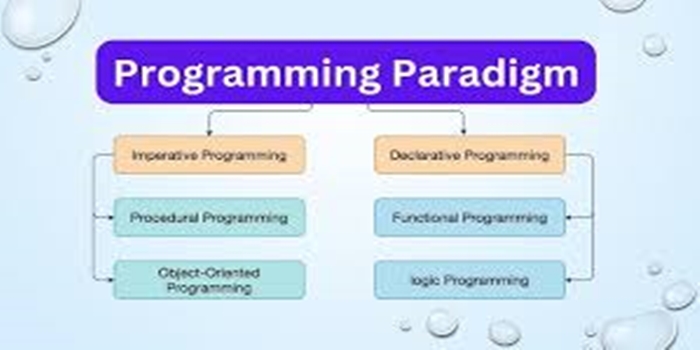Introduction
Programming paradigms are the essential styles or approaches to programming that outline how developers think about and solve problems.in this article, we discussed programming paradigms, the evaluation, the rise of object-oriented, and the future.
A programming paradigm is a way or style that dictates how solutions are expressed in code. It’s a set of concepts and principles that influence how programmers structure their code, organize data, and handle control flow.
Some common paradigms include:
Procedural
Object-Oriented Programming (OOP)
Functional
Logic
Event-Driven Programming
The Evaluation of programming paradigm:
The most basic programming paradigms were procedural or imperative. Procedural programming organizes instructions sequentially, much like a recipe, where each step is executed one after another.
Use of variables, loops, conditionals.
Originated in the 1950s and 1960s with languages like FORTRAN and ALGOL. Enabled to break down complex tasks into smaller, reusable procedures. Dominated early computing when memory and CPU power were limited. Code structured into procedures or functions. Emphasis on statements that change program state.
The Rise of Object-Oriented Programming (OOP)
As software systems grew more complex, a new paradigm emerged to address the shortcomings of procedural code: Object-Oriented:
Encapsulation: Bundling data and methods in objects.
Legacy: Creating hierarchies of related classes.
Pleiomorphism: Objects can be treated as instances of their parent classes.
OOP ideas trace back to the 1960s with Simula, but gained prominence with Smalltalk in the 1970s.
Languages like C++ (1980s) and Java (1990s) popularized OOP widely.
OOP helps model real-world entities as objects, improving modularity and code reuse.
Easier maintenance and scalability.
Better code organization around data and behavior.
Foundation for GUI development and large-scale software.
Functional:
Parallel to OOP, another paradigm emerged focused on mathematical functions and immutability: Functional Programming (FP).
Core Principles:
Functions are first-class citizens.
Avoid mutable state and side effects.
Use recursion instead of loops.
Based on lambda calculus, developed in the 1930s.
Languages like Lisp (1958) and Haskell (1990) embody functional principles.
FP gained traction recently with the rise of concurrent and parallel computing.
Advantages:
Easier reasoning about code behavior.
Improved suitability for parallel processing.
Promotes pure functions, reducing bugs and side effects.
Challenges:
Steeper learning curve for imperative.
Sometimes less intuitive for stateful, real-world problems.
Logic Programming:
Focuses on expressing facts and rules.
They are written as logical statements.
Prolog, used in AI and expert systems.
Event-Driven Programming:
Programs respond to events like user actions or messages.
Crucial in GUI development and asynchronous.
Concurrent and Parallel Paradigms:
Address modern multi-core processors.
Paradigms like actor model (Erlang) enable safe concurrent.
The Hybrid and Multi-Paradigm Era
Modern languages often support multiple paradigms, allowing developers to pick the best tools for the job.
Examples:
Python supports procedural, OOP, and functional styles.
Scala blends OOP and functional.
JavaScript combines event-driven, functional, and imperative paradigms.
The Future of Programming Paradigms
As software complexity and hardware continue to evolve.
Quantum promises new models based on quantum mechanics.
AI-Assisted may redefine how we write and understand code.
Paradigms emphasizing declarative styles (e.g., configuration as code, reactive programming) are gaining ground.
Conclusion
The evolution of programming paradigms reflects a constant journey towards greater expressiveness, maintainability, and efficiency in software development. Each paradigm, from early machine code to modern multi-paradigm languages, has built upon the strengths of its predecessors while addressing their limitations. This evolution has allowed developers to tackle increasingly complex problems and has shaped the software landscape we see today.
READ: The Evolution of Ecommerce

